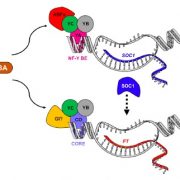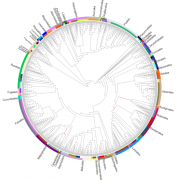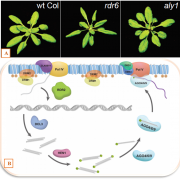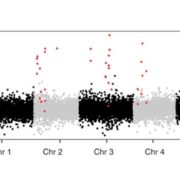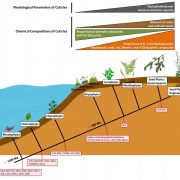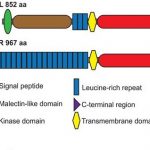Conserved transcriptional programs underpin organogenesis and reproduction in land plants (bioRxiv)
 Land plant evolution accompanied a plethora of evolutionary novelties such as cells that compose complex organs (e.g., stems, leaves, roots) and male/female gametophytes. The identity and conservation of the transcriptional programs underlying organogenesis and reproductive development across land plants remains poorly explored. Julca et al., generated expression atlases of several organs and gametes for 10 representative species of major land plant lineages and performed comparative analyses to shed light on potentially conserved transcriptional signatures. They found that most organs, with the exception of roots and male gametes, express a significant part (>50%) of their genes, whereas roots and male gametes transcriptomes only express 46% and 38% of their genes, respectively, which suggests a higher level of specialization in these transcriptional programs. Phylostratigraphic and phylogenomic analyses showed that older gene families are more generally expressed (less organ-specific), whereas younger gene families tend to be more organ-specific, suggesting that new genes are more commonly recruited for specialized functions. In addition, many gene families that are expressed in specific organs appeared in the phylogeny long before the corresponding organs, which corroborates previous research: the establishment of new organs is strongly fueled by gene co-option. Analysis of male/female gametophyte transcriptomes revealed that transcriptional signatures of mature pollen are conserved across land plants, while female transcriptional programs are much less conserved. (Summary by Jesus Leon @jesussaur) bioRxiv 10.1101/2020.10.29.361501
Land plant evolution accompanied a plethora of evolutionary novelties such as cells that compose complex organs (e.g., stems, leaves, roots) and male/female gametophytes. The identity and conservation of the transcriptional programs underlying organogenesis and reproductive development across land plants remains poorly explored. Julca et al., generated expression atlases of several organs and gametes for 10 representative species of major land plant lineages and performed comparative analyses to shed light on potentially conserved transcriptional signatures. They found that most organs, with the exception of roots and male gametes, express a significant part (>50%) of their genes, whereas roots and male gametes transcriptomes only express 46% and 38% of their genes, respectively, which suggests a higher level of specialization in these transcriptional programs. Phylostratigraphic and phylogenomic analyses showed that older gene families are more generally expressed (less organ-specific), whereas younger gene families tend to be more organ-specific, suggesting that new genes are more commonly recruited for specialized functions. In addition, many gene families that are expressed in specific organs appeared in the phylogeny long before the corresponding organs, which corroborates previous research: the establishment of new organs is strongly fueled by gene co-option. Analysis of male/female gametophyte transcriptomes revealed that transcriptional signatures of mature pollen are conserved across land plants, while female transcriptional programs are much less conserved. (Summary by Jesus Leon @jesussaur) bioRxiv 10.1101/2020.10.29.361501


